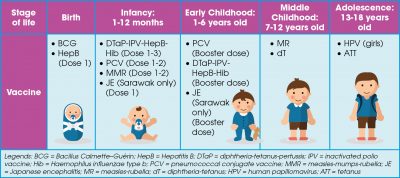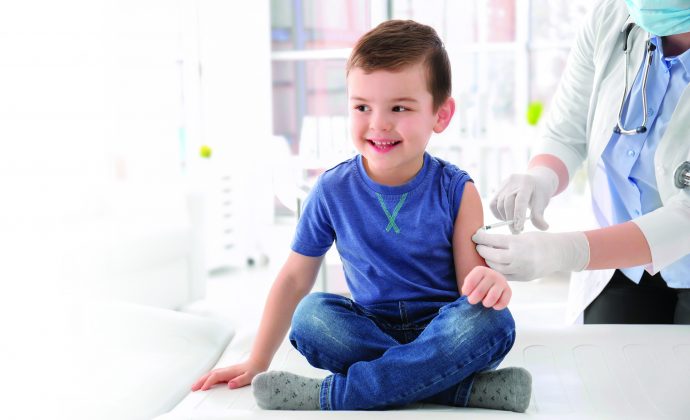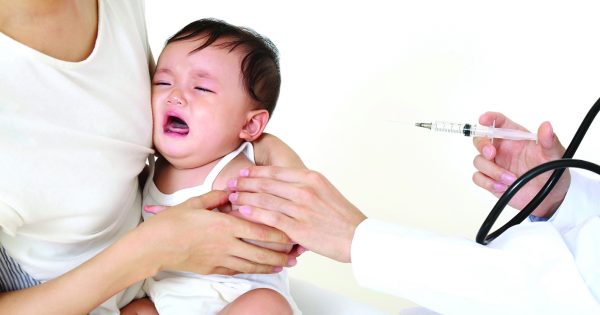Children are most vulnerable to infection during infancy – that’s why they have to receive most of their immunisation shots as early as possible during that stage of life. However, it doesn’t mean that their immune system has fully developed once they start to walk and talk.
After infancy, the next stage of child development is early childhood, a crucial phase of life when children start to explore the world on their own. This is the time when they will take their first step, say their first sentence, make their first friend, attend their first class in preschool and do many other firsts in life. Typically, a child in the early childhood stage is called a toddler when they are 1-3 years old and a preschooler at 4-6 years old.
Stages of vaccination
Children receive most of their vaccine shots at a very young age. Here’s a timeline of the vaccination schedule according to a child’s stage of life:

By the time a child reaches 1 year old, they would have received at least 9 out of 14 total vaccine shots (or more for girls, or children in Sarawak/Sabah) as scheduled in the National Immunisation Programme (NIP). They will also continue to receive the remaining shots during childhood and adolescence.
The strategy of giving as much vaccines as early as possible is undertaken around the world because children are susceptible to diseases, especially during infancy. Infectious diseases, such as tuberculosis, polio, diphtheria, measles and pneumococcal disease, can be life-threatening to infants. However, this doesn’t mean that toddlers and preschoolers are free from danger!
Why they need to be vaccinated too?
Young children who have received their vaccine shots during infancy are protected against the diseases covered by the vaccines. However, they still have to complete their doses of PCV, DTaP-IPV-HepB-Hib and JE vaccines after age 1 year to ensure full protection against the diseases.
Apart from that, it is important for toddlers and preschoolers to receive and complete vaccination as children below 5 years old are also categorised as high-risk groups vulnerable to infectious diseases due to their still immature immune system.
Early childhood is also the age when most children first go to daycare centre, kindergarten and preschool. Close proximity with other children, caregivers and teachers at these places exposes them to possible infections. At these ages, children are also very curious to explore their surroundings and this tendency may put them in danger of being infected.
Another reason for toddlers and preschoolers to get vaccinated is to provide a layer of indirect protection to other high risk populations in their household, such as infants, the elderly and people with chronic diseases or suppressed immune system.
Parents should also note that some daycare centres, kindergartens and preschools may require children to be fully vaccinated according to the NIP to be enrolled in their establishments.
A note on pneumococcal catch-up vaccination
PCV has finally been included in the NIP starting in 2020 and this is such a welcome progress. The downside is that it is currently only provided for free for children who are born in 2020 or later. Children who are born a little earlier are currently still under 5 and also need to be protected against pneumococcal infection.
Hence, pneumococcal catch-up vaccination for this group of children is recommended. The World Health Organization (WHO) states that catch-up vaccination should be applied when introducing PCV in the NIP if possible. This is to accelerate its preventive impact in children aged between 1-5 years old. Consult a paediatrician to learn more about pneumococcal catch-up vaccination for your toddler or preschooler.







Comments